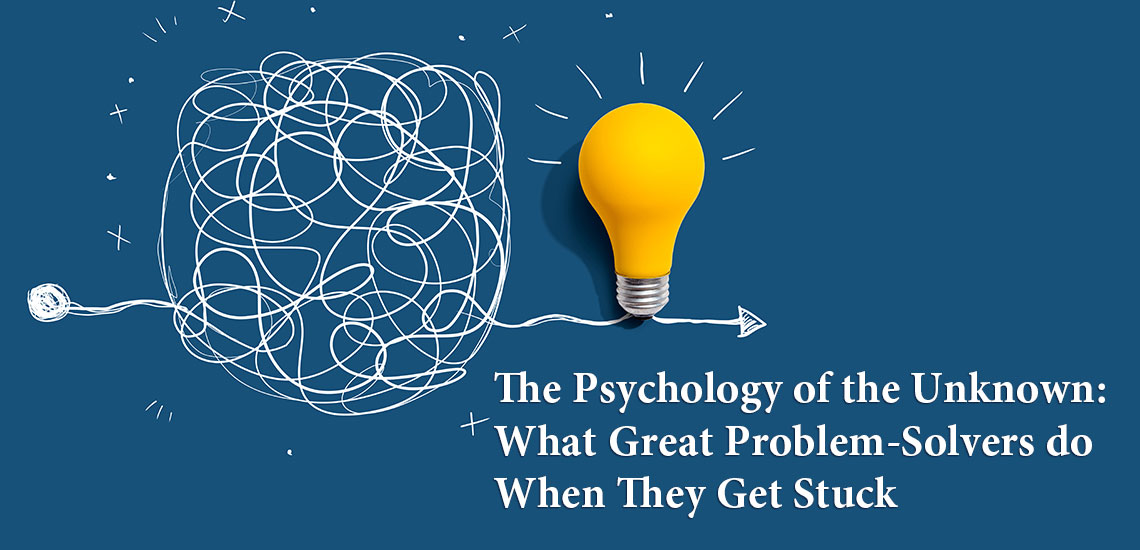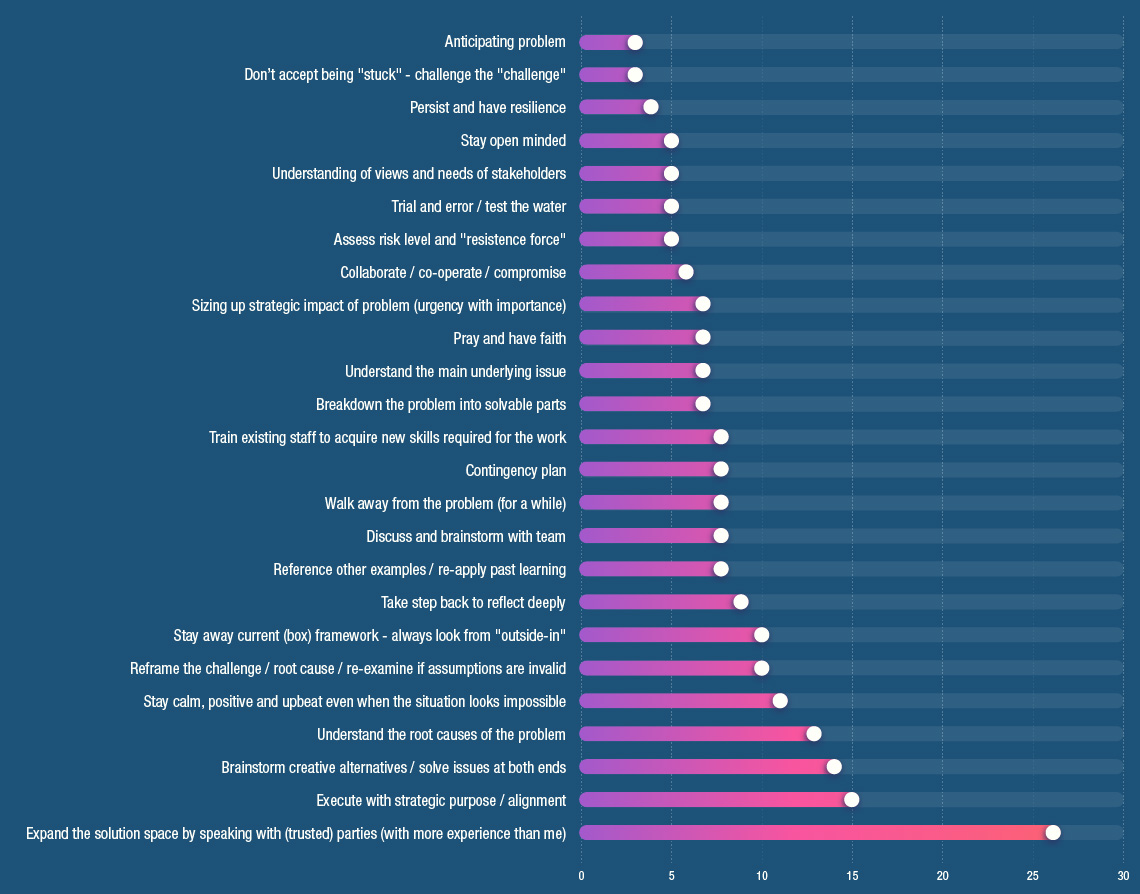
CEO Report
The Psychology of the Unknown: What Great Problem-Solvers do When They Get Stuck
|
Much of reality is made up of the “unknown”, the unfamiliar, rare, novel events and situations – often challenging and violating our current taken-for-granted assumptions of what works and what doesn’t work. This can be a source of great anxiety or fear as it represents lack of control and certainty. We can choose to avoid or ignore it at our own peril particularly if it is perceived as threatening or overwhelming. Yet there are some who rise to the challenge by thinking differently about uncertainty and progress forwards.
This CEO Report is about tapping into the psychological thought-processes of how great problem-solvers see, interpret and makes sense of being stuck with complexity and what they do (or fail to do) to progress. To uncover these underlying thinking patterns, we administered a rigorous and systematic interview approach from clinical psychology called, Repertory Grid Technique (RGT). Our sample consists of fifty (50) seasoned CEOs / Executives spanning a wide range of industry sectors.
|
 |
Dr Robert Phillip WRIGHT
Associate Professor, Department of Management and Marketing
|
Seven (7) inherent latent themes emerged from our analysis as to what are the core drivers (habits of mind) that help executives open up the alternatives whenever they find themselves stuck with complexity: Executives emphasized the importance of bringing a Fresh perspective through “reframing”, reimagining and reviewing the validity of current assumptions / expectations. They look at the issues from a different perspective, thinking around, collaborating, being open-minded and staying away from current (box) frameworks.
Thinking, feeling and acting “as if” you are the Owner (this is my problem, my life – so what am I going to do about it?). Here they expand the solution space by speaking to trusted parties in/outside their field for feedback; spending more time to understand the context, situation and stakeholder priorities; assessing risk levels, resistance forces, always anticipating (with early warning systems), and not accepting the fact that when they find themselves stuck, that they are stuck.
Showing Connected-thinking by breaking down the problem into solvable parts and see the underlying issues; being responsive to prevailing situations from multiple sources/ different perspectives, and the connection between reasons for action, uncertainties and the consequences of inaction.
Also featured prominently in our findings is the need for Urgency with the end in mind. Seeing the urgency, criticality and importance of moving forward, clearly visualizing the end-game, executing with strategic purpose / alignment, sizing up the strategic impact of the problem, making reference to other examples of successful cases and past learning.
Leveraging off teamwork to establish collective intelligence through regular discussions, exploration and reviewing of alternatives; and ensuring the team continually acquires new competencies to meet the demands of changing landscapes.
Being fully In-the-zone by having a persistent mentality (never giving up), careful and thorough analysis, harnessing my strengths and perceived strengths to gain momentum and campaign, having contingency plans, experimenting with trial and error; and remaining calm and positive even if the situation looks impossible.
And finally, the importance of Reflective/ Reflexive Practice. Literally walking away (for a while) and taking a step back to reflect/reflex deeply about the situation (of what we are doing and not doing), knowing where the pain-points and causes are, clear understanding of key performance indicators / critical success factors, and having faith in the process.
Taken together these seven drivers provide a powerful framework that help guide the thinking
process when our visions of the world shrink. It fosters accelerated learning, constant renewal, resilience, holistic, and interconnected thinking that forms the foundation of the rapid response system used by our sample of 50 CEO / Executive problem-solvers. Cultivating them into your everyday practice will require time, patience, persistence and curiosity.
For full report: https://polyu.hk/RUnTx
Top 3 MUST do to open up alternatives when CEO / Executives get stuck







